Remarkably, the Great Wall of China is one of the few architectural structures that can be visually spotted from out of space, and to many, it is one of the world’s wonders. The wall stretches for thousands of miles and is steeped in a rich history that can be experienced enthrallingly by tracing its remnants starting from Beijing. This article provides helpful information on accessing and exploring the most famous segments of the wall and its historiographic value. Whether you want to go sightseeing or engage in an active hiking trip, this guide covers all the necessary details that will help make your visit to the Great Wall a memorable one.
What to Expect on a Great Wall Tour?
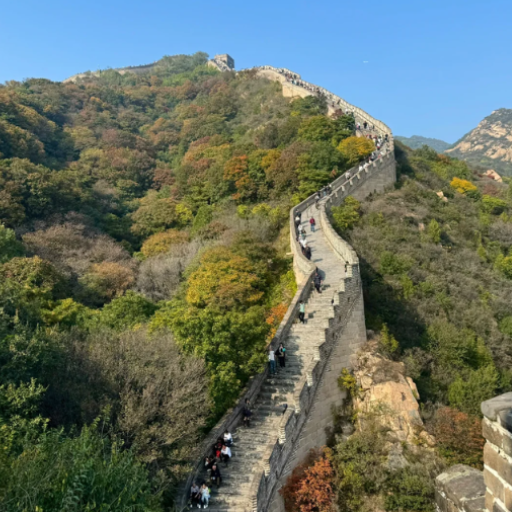
Aspects of The Great Wall of China
Built-in the year 221 BC, The Great Wall of China offers vast panoramic views, contains remnants of China’s complex history, and is deeply rooted in cultural importance. The Badaling section is popular among tourists because of its status as the most accessible segment. It is also well preserved, making it an excellent place for first-time visitors to the wall. Conversely, the Mutianyu section offers unforgettable scenic beauty, including dense forests and well-marked and maintained trails. For those feeling adventurous, the Jinshanling section is famous for its rugged and only partially restored wall. Each section eloquently displays the ingenuity behind the Great Wall’s architecture and ancient defensive military tactics. Ultimately, the Great Wall is regarded as an iconic landmark around the globe.
Various Great Wall Parts Of China That One Can Visit
The Great Wall Of China is segmented into some of the most well-known sections, which are attractions. The Badaling section is the most accessible and suitable for first-timers as it is well-preserved, well-maintained, and an easy foothold for mountaineers. The Mutianyu section is calmer in terms of tourism and speaks of beautiful nature, which makes it perfect for families and people looking to take a relaxing trip. The jinshanling section of the wall has the roughest and most spectacular views. It is more suitable for honest exploration as parts of it are not entirely restored, and hence, is perfect for hiking lovers. All these sections of the Great Wall of China showcase the tremendous feat of ancient engineering while also depicting the country’s diverse landscapes.
How to Choose Popular Great Wall of China Tours
When selecting the Great Wall of China tour, one needs to consider the location, the difficulty level of the tour, and the type of the tour. Mutianyu has restored sections that are reasonable for families because they are easy to get to, have a cable car, and are family-friendly. If you seek adventure, Jinshanling and Simatai provide sections of the wall that are less crowded but are the best for hiking lovers because part of the wall is from the original structure and part is restored. Private or group tours often consist of hotel pickups, transport, a guide, and departure itineraries to the clients’ liking. In addition, established operators usually add other cultural elements, such as local village visits, which add value beyond the wall.
When is the Best Time to Visit the Great Wall?
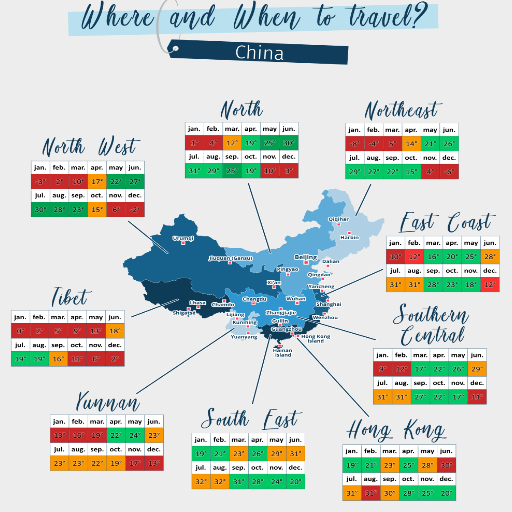
Seasonal Considerations for Visiting
The rest period to the Grand Canyon is springtime and autumn. These months have mild temperatures alongside clear skies, making exploring more pleasant. Autumns also brings fantastic foliage, especially alongside Mutianyu regions. Summers can be incredibly hot and sticky, while winters provide a quieter experience. However, it is accompanied by snow, making some sections hardly reachable. It is crucial to check the weather for such uncircumventable reasons.
Effects of Climate and Weather to the Traveler’s Experience
The weather conditions and the overall climate of the region tremendously affect the overall experience and accessibility of the Great Wall of China. Hiking the Great Wall is at its best during spring (March to May) because of the mild temperatures and blooming flowers. Autumn (September to November) is often considered the best season because of the lower temperatures and clear skies along with stunning foliage. While summer remains a peak travel season, but it can be difficult because of high humidity and sweaty conditions. Winter can be quiet and serene, but the cold temperatures and icy paths, along with hopefully not too much snow, can restrict some access. Having the proper gear and staying up to date with future forecasts are crucial to having a pleasant experience while staying safe.
The Busy Periods in Tourism and Tourist Influxes
High seasons are usually in spring and autumn when the weather is pleasant, and nature is stunning with flowers or foliage, which makes these seasons highly attractive. The highest tourist activity occurs in summer when temperatures are high and the crowd density is thick because of school holidays and favorable traveling conditions. Off-Peak months tend to see fewer visitors, allowing for a more calm experience but seasonal weather constraints can interfere. Early morning during holidays and weekdays are the best times to avoid large crowds in popular destinations.
What are the Best Sections of the Great Wall near Beijing?
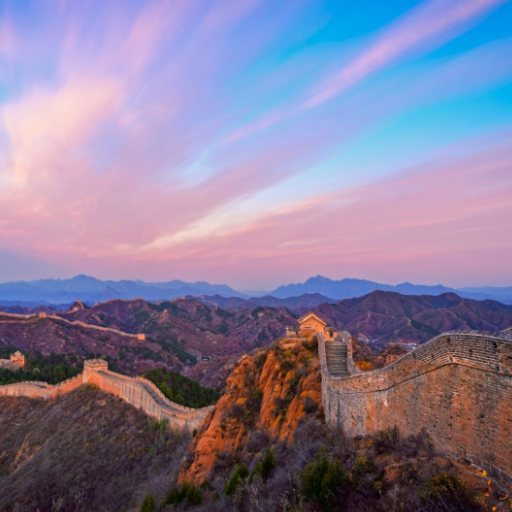
Exploring Badaling: The Most Popular Section
Due to its high levels of accessibility and restoration, Badaling is the most popular visited and well-preserved section of the Great Wall of China. Located almost 70 kilometers Northwest of Beijing, travelers can resort to the G6 Beijing – Lhasa Expressway or Badaling Railway Station, both of which make the site favorable among tourists. Walls built during the Ming dynasty measured around 7 meters in height with a width of 6.5 meters at the base, making the structure durable and defensive.
The HOA covers a distance of 3.74 kilometers. Badaling is also well known for its wide array of handrails, which are suitable for families with children or old people. Along with this, observation platforms also allows visitors to take in scenic views from different perspectives. In 2000, the section was added as a popular extension of the central Great Wall of China. The prominent feature includes the battlement and watch towers placed at precise intervals of 300 meters, reflecting the site’s significance in constructional art and architectural architecture beauty.
Regardless of peak season, travelers are encouraged to arrive as early as possible to evade heavy crowds. During winter, temperatures tend to drop below freezing, so clothing should be adjusted accordingly. The elevation of Badaling is around 3,281 feet, or 1,000 meters, above sea level. Overall, Badaling boasts an extensive cultural history alongside convenient accessibility, making it the most popular site for visitors wanting to view the Great Wall.
Exploring Mutianyu: An Alternative for Families
The section of the Great Wall at Mutianyu is one of the most visited by families since its restoration, making it less dangerous, with unobstructed views and scenery over the woods. It is located around 40 miles, or 65 kilometers, northwest of Beijing, making it more accessible. Additionally, it had fewer crowds and better-preserved fortifications compared to Badaling. The Mutianyu fortification also has a cable car, chairlift, and even a toboggan slide, which makes the wall more enjoyable for visitors of all ages. Due to its historical importance and modern features, Mutianyu offers visitors a break away from the busy Great Wall in a more relaxed atmosphere.
Hiking Jinshanling: For the Adventurous Traveler
Approximately 130 kilometers northeast of Beijing rests Yan Mountain, best known for housing the less commercialized and astounding stretch of Great Wall Jinshanling. This challenging path begs for experienced hikers due to its steep gradients, rugged terrain, and ancient petrifying towers in various states of preservation. The 10-kilometer stretch between Jinshanling and Simatai is famous among seasoned hikers seeking stunning views and an immersive historical setting. Jinshanling is an excellent choice for those who want a ruthless but authentic Great Wall experience. For those looking to straddle the line between civilization and the wilderness, Jinshanling is an adventurous treravelers’dream. With low tourist traffic, travelers can savor in the restfulness and undisturbed ambiance the wall has to offer.
What is Included in a Private Great Wall Tour?
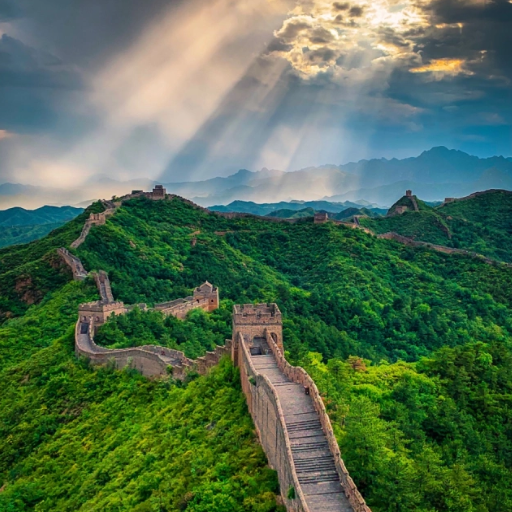
Tailor-Made Itinerary For Your Trip
A private tour of the Great Wall often includes a personalized itinerary that considers your preferences and fitness level. You may select from the less popular sections, such as Jinshanling or Mutianyu, for more personable experiences or choose the Badaling section for easy accessibility. Some packages provide transportation to and from the Wall, additional tours with expert guides, and flexible scheduling for a more enjoyable trip. Additional services may also include meal arrangements and other bonus activities such as photography standstills, but these depend on the tour package.
Transportation And Cable Car Services
Visitors to the Great Wall have different transportation options and cable car services to enhance their tours. For transportation, private car services are straightforward to use, especially when trying to reach the less accessible parts of Badaling. While public buses and group tours have cost-efficient options, they require more time management skills and the ability to follow rigid schedules.
Concerning the cable cars, specific wire stretches are equipped with this service to ease the climb. For Mutianyu, a cable car and a chair lift can take visitors closer to the Wall and a toboggan ride is an exciting way to descend the wall. For Badaling, cable cars are available to the upper watchtowers for quicker access for people with restricted mobility or limited time. These alternatives oppose many needs, making their visit easy and effective.
Guided Tours Vs Self-Guided Tours
These two options have particular strengths and weaknesses, which depend on what matters more to the visitor, notably the self-guided and self-guided tour approaches to experience the Great Wall. The advantage of guided tours comes from skilled people on the ground who are armed with relevant historical and cultural information and travel logistics who make plans for the travelers, eliminating the burden on the tourist’s head. The guides can name less populated areas, and time can also be well managed.
In contrast, a self-guided one gives the utmost freedom to roam around without restriction, which is perfect for determined sorts of people who want to do it for themselves. Both groups are catered for making it much more a matter of preference or necessity depending on the traveler.
What Should You Know Before Your Great Wall Day Trip?
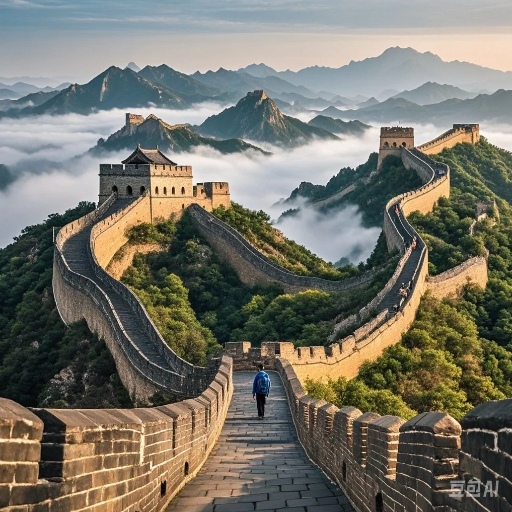
Key Items for a Day Tour To Remember
For a day trip to the Great Wall, there are certain items you ought to pack to keep you comfortable and safe. For example, bring sturdy, comfortable shoes appropriate for the rugged hiking paths. It is warm, so drink plenty of water while consuming light energy bars to stay energized. Sunglasses, sunhats, and sunscreen are essential when it is mainly sunny; thus, those items should be brought along when you are in exposed areas. A lightweight daypack is highly suggested to avoid overstraining your shoulders while carrying your items. Depending on the season, it is usually advisable to dress in layers for fluctuating temperatures. Remember to bring cash, as some vendors or facilities do not accept credit cards. Those and an extra fully charged smartphone or camera to take pictures with will make your experience memorable. Preparation is crucial for a rewarding and safe visit to the Great Wall.
Strategies for Getting The Most Out of The Great Wall
- Selection of Footwear: Choose waterproof hiking boots with 4 mm to 5 mm thick rubber outsoles with support at the ankles and grips on the soles to prevent slipping and offer stability on rugged terrain. Boots are preferable during the wet seasons.
- Hydration (Volume Recommendations): Carrying 2 liters of water is ideal for a solo day trip, while insulated bottles or hydration bags will be great for keeping your water warm. Water can also be packed in more significant quantities but in smaller bottles for greater convenience.
- Adaptation to Changing Weather (Clothing Layers): A shell that is light in weight and allows breathing, waterproof garments made from Gore-Tex or other similar substitutes are essential if predicting rain. Incorporate more layers like moisture-wicking base layers made from polyester or merino wool and fleece or down jackets as mid-layers for added insulation when needed.
- UV Protection Standards: Ensure you use sun protective lotion with an SPF reading of thirty or above and that it is water resistant. Polarized sunglasses are rated UV400 and are preferred for glare reduction and eye protection.
- Calorie Level Requirements (Energy Expenditure): High energy-density snacks like energy bars or trail mix will be ideal for sustaining energy through hiking. 100-200 high-calorie snacks are recommended to disperse energy actively through the journey.
- Navigation Tools: Always carry a detailed area map or set up a GPS device without Internet accessibility (Gaia GPS). It is also advisable to have a power bank of at least 10,000 mAh to recharge devices when needed.
- Emergency Preparedness: Pack a first aid kit, which contains adhesive bandages, antiseptic wipes, and blister pads. Also, carry a whistle and a multi-function tool or knife for absolute worst-case scenarios.
- Cultural Respect: Ensure you learn some essential customs, especially regarding sensitive or less developed areas of the wall. Make use of posted signs and do not deface or destroy any of the landmarks to protect this historic site.
These tips are anchored on particular considerations meant to elevate safety, comfort, and the whole experience while maneuvering the Great Wall.
Precautions on the Wall
While visiting a Great Wall, safety should come first, and you should bring sturdy, non-slip shoes to help you avoid accidents on problematic or broken areas of the wall. Pay attention to weather conditions because rain or snow can make surfaces extremely slippery. Do not go off the marked routes and do not attempt to scale unstable zones since they are likely to give way. Make sure to take adequate water supplies to deal with excessive thirst on long tiring hikes without overexerting yourself. Always let someone know about your intentions and avoid, for your own safety, the non-tourist viable parts.
How do you plan an Intrepid Travel US Great Wall Trek?
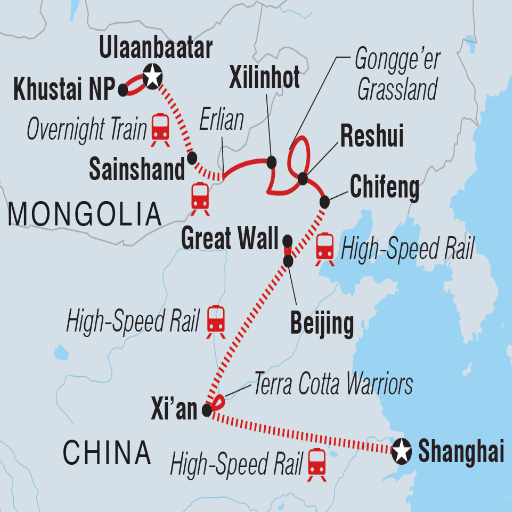
Developing the Perfect Itinerary
Start by choosing the portions of the Great Wall that fit your fitness levels and interests for your ideal trek. If you have a family, the Mutianyu section is suitable as it is family-orientated. Still, if you are looking for a challenge, you can hike the Simatai and Jinshanling sections, which have less crowded, beautiful scenery. Pick the time of year you want to visit the wall: spring (April -May) and autumn (September- October). These periods have temperate weather and beautiful scenery.
Additionally, consider the length of your stay on your trip; some travelers are content with a day trek, but others prefer to take their time and do multi-day hikes to explore various sections of the wall. Depending on where you will be doing your hikes, arrange transportation because some regions require private transfers or guided tours. Lastly, ensure that you carry appropriate clothing for the weather, comfortable shoes, water, snacks, and a map for the perfect seamless experience.
Group Tours and Solo Adventures: Comparison
You must choose group tours or solo adventures based on your objectives and personal preferences. Group tours appeal to those looking to gain comprehensive understanding of a destination with peers. Because they include professional tour guides along with transportation, virtually everything is catered for by service providers. On the flip side, social interactions are limited as accommodating numerous different perspectives can be a challenge. Unfortunately, these tours come with tight schedules, leaving little opportunity for personal exploration which can often make them less desirable amongst more experienced travelers.
Solo adventures, on the other hand, give you full control of where you wish to go, how fast or slow you want to travel, along with the ability to tailor the trip specifically to your liking. This is the perfect option for seasoned independent hikers who do wish to explore different locations on the Great Wall of China. Naturally, being more autonomous means more complex trip preparation, from routes to ensuring safety on the Great Wall. Both options are appropriate for different travelers at different stages of their journey; therefore, it all comes down to comfort level and a few individual factors.
Planning Resources for the Great Wall Visit
It is beneficial to have dependable resources while planning a visit to the Great Wall to have a smooth experience. Consider the following tools and resources.
1. Travel Experts
Travel agencies can assist clients with organizing transportation, guided visits, and custom tours within the broad travel packages they offer. Try to look for agencies that focus on Chinese heritage and culture for better andmore authentic understanding. Make sure they are verified and have good ratings.
- Verification documents and licenses of the agency.
- Levels of detail are provided in the package, such as mode of transport, duration of the tour, and amenities available.
- Ratings and reviews (A minimum of 4 out of 5 is recommended).
2. Web Resources
Travelers can reserve tours, whether group or individual, set their budgets, and check the reviews on resources such as TripAdvisor, Ctrip, and GetYourGuide. Also, if someone is traveling alone, they can navigate using MAPS.ME, Google Maps, or other similar platforms.
- Ease of use in navigation and level of customization provided.
- Disclosure of price and what it includes.
- Ability to view maps of areas without connectivity.
3. Logistics and Transportation
One must account for public transportation and car rental availability for self-guided travel. There are also reliable alternatives of transportation such as Didi (China’s ride-hailing app) and China Railways that help reach certain more remote sections of the Great Wall.
- Train or bus services that target specific parts of the Wall.
- Availability of local taxi or rideshare services (confirm these for return journeys).
- The expected time and expense.
4.S afety and Insurance
However, no matter how you choose to travel, ensure you are always at least somewhat prepared. A policy covering medical and personal accidents while away on a trip is a must. If you intend to hike alone, bring relevant safety equipment.
- Documentary proof of travel insurance policy.
- First aid kit, emergency communication devices, and appropriate clothing for the weather.
- Relevant contacts for local authorities and/or emergency services.
This addresses many of the parameters above and ensures that the travel can be planned to meet safety requirements, personal preferences, and sightseeing requirements.
Reference sources
Frequently Asked Questions (FAQs)
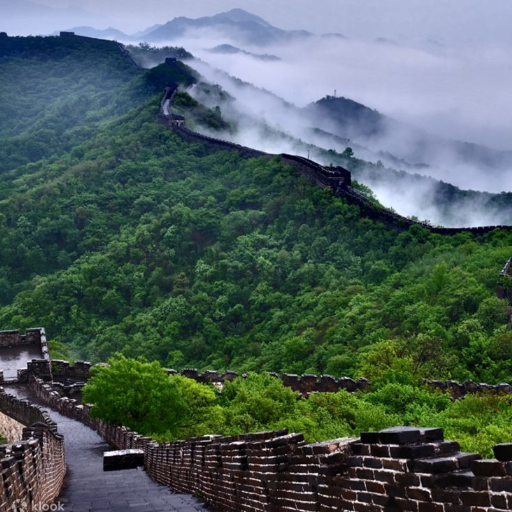
Q: What are the most popular great wall highlights to see on a tour from Beijing?
A: Some of the most popular great wall highlights include the Badaling Great Wall, known for its accessibility and restoration, the Mutianyu Great Wall offering stunning views and fewer crowds, and the Huanghuacheng, which features unique lakes and unrestored sections.
Q: Can I book a private tour for the Great Wall of China?
A: Yes, many tour operators offer private tours running out of Beijing to various sections of the Great Wall, allowing you to customize your itinerary and enjoy a more personalized experience.
Q: What is the best time of year to visit the Great Wall?
A: The spring months are often considered the best time to visit the Great Wall, as the weather is mild, and you’ll avoid the summer crowds. However, each season offers unique views of the Great Wall.
Q: What can I expect to see at the Mutianyu Great Wall?
A: At the Mutianyu Great Wall, you can expect to see beautifully restored watchtowers, lush scenery, and panoramic views of the surrounding mountains. It’s ideal for a family-friendly outing and hiking.
Q: How far is the Badaling Great Wall from downtown Beijing?
A: The Badaling Great Wall is approximately 70 kilometers from downtown Beijing, making it easily accessible by car, taxi, or organized tours running out of Beijing.
Q: Are there options for guided tours with free cancellation?
A: Yes, many tour providers offer guided tours to the Great Wall that come with free cancellation policies, giving you flexibility in case your plans change.
Q: Are there any less crowded sections of the Great Wall to visit?
A: Yes, sections like Huanghuacheng and the unrestored areas of the Great Wall offer a more secluded experience compared to the more famous sections like Badaling, which can get very crowded.
Q: Can I see views of the Great Wall from the Gobi Desert?
A: While the Great Wall stretches far into northern China, the Gobi Desert does not have direct views of the Great Wall. However, certain tours may include visits to sections of the wall that are located near desert areas.
Q: Is it advisable to visit the Great Wall during the hottest months?
A: It’s not advisable to visit during the hottest months unless you are well-prepared for the heat. The ideal times are spring and fall when the weather is more temperate and enjoyable for hiking.
Q: Where can I find reviews for Great Wall tours?
A: Reviews for Great Wall tours can commonly be found on TripAdvisor.com, where travelers share their experiences and recommend various operators based on their visits to different sections of the Great Wall.